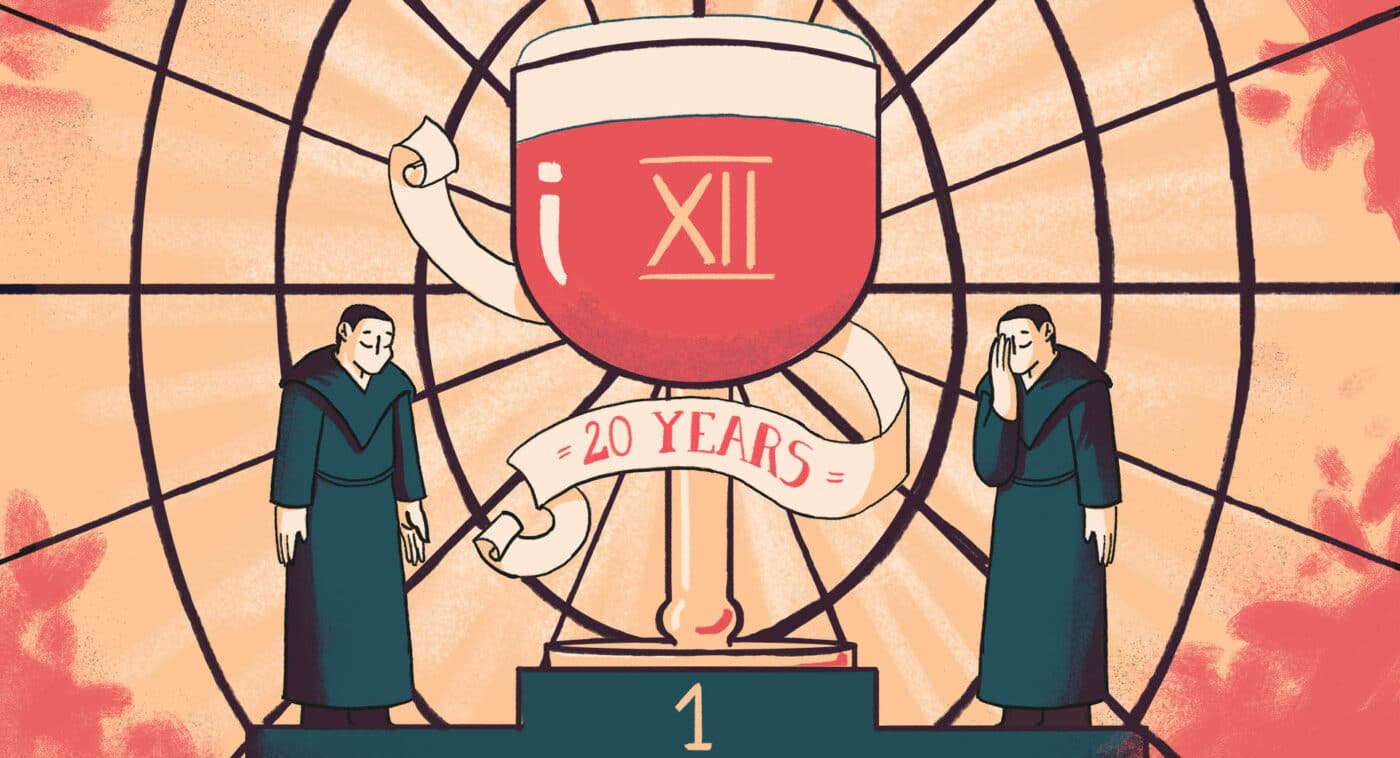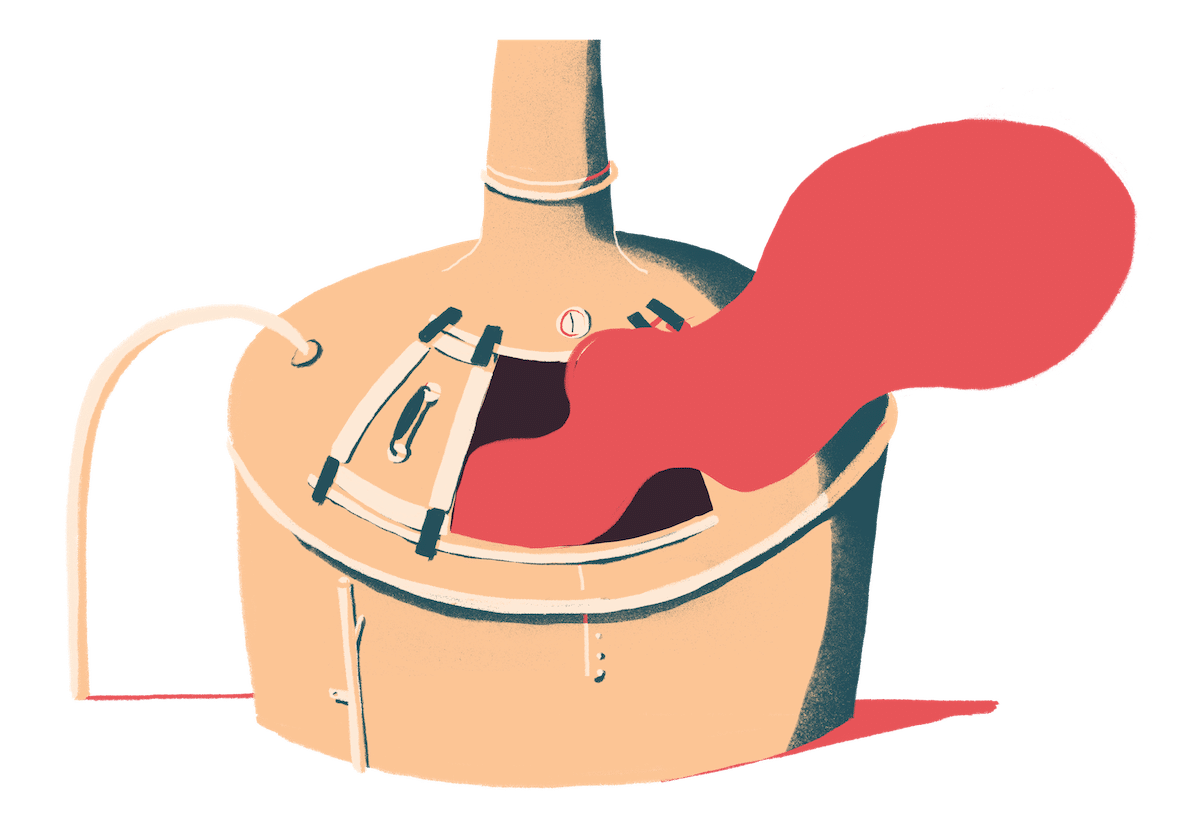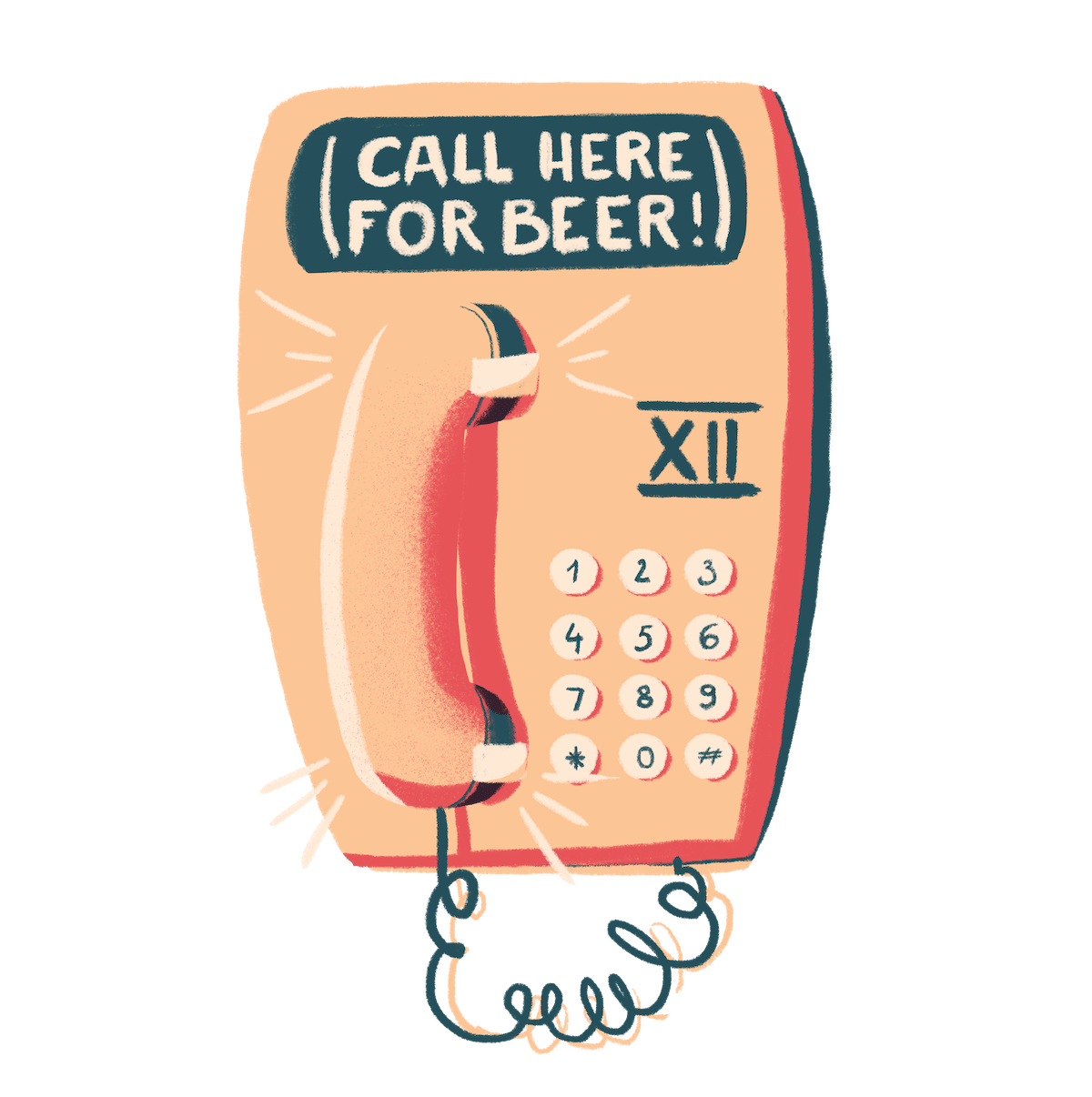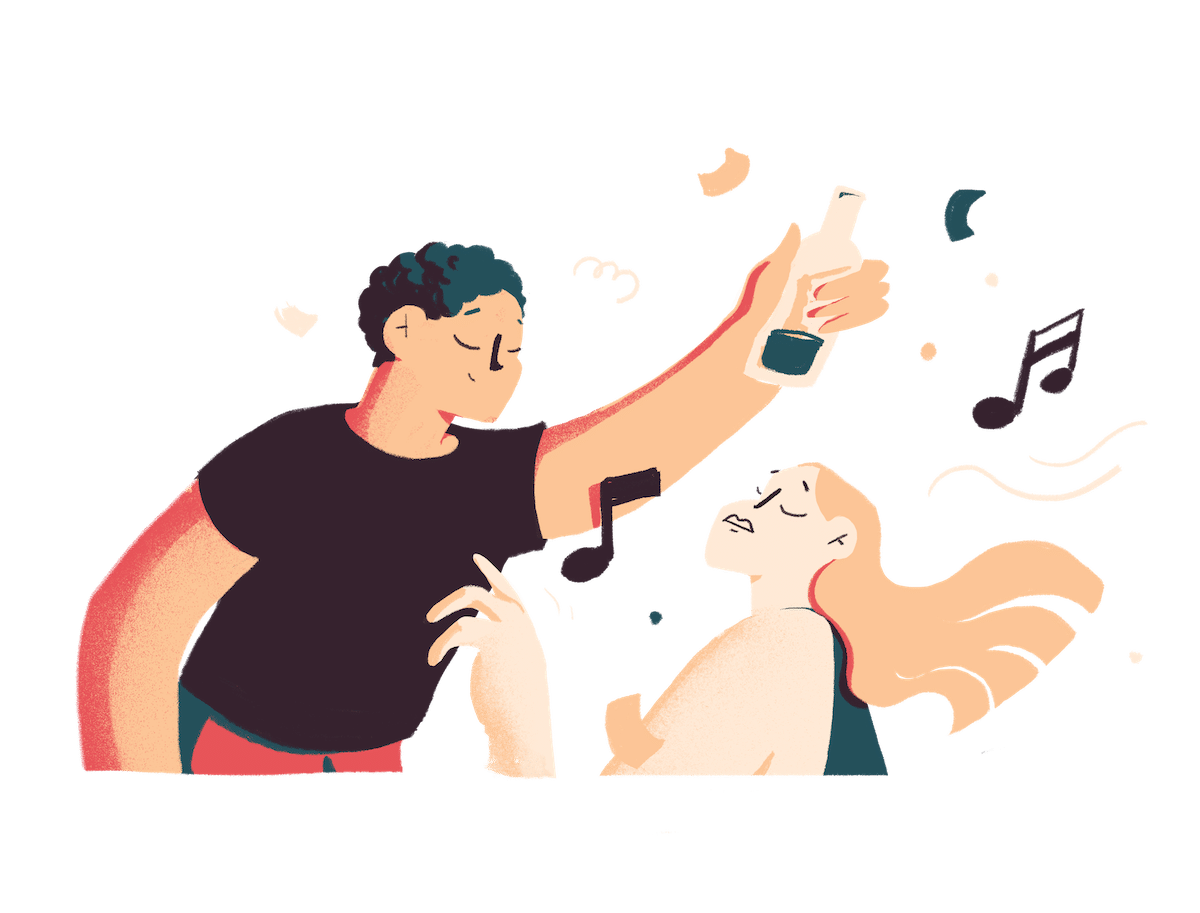As we approach the twenty year anniversary of Westvleteren 12’s original crowning by RateBeer, Jonny Garrett examines how a strong dark ale produced by a tiny monastery brewery in North West Belgium became the world’s most sought-after beer.
Words by Jonny Garrett
Illustrations by Gheleyne Bastiaen
Edited by Breandán Kearney
This editorially independent story has been supported by VISITFLANDERS as part of the “Game Changers” series.
I.
The End of Silence
The quiet town of Westvleteren had no idea what was coming.
Local news stations reported chaos in that late summer of 2005. Drivers in the Flemish village parked wherever they could, churning up grass and leaving debris. The police were summoned. Helicopters scrambled. People queued for hours outside the village’s monastery, bringing traffic to a standstill.
Then the world saw what was going on and the press started calling. They asked how a handful of monks had achieved such a thing, and why they would even want to.
The monastic inhabitants of St Sixtus Abbey, a few kilometres south of Westvleteren, had brewed beer for centuries, using the profits to support their peaceful way of life. Like any conscientious brewery, they wanted their beers to be as good as they could be, but it was far from their focus. They certainly didn’t list Westvleteren 12, their Belgian Dark Strong Ale—or “Quadrupel”—on any beer rating sites. So they were probably more surprised than anyone when, in 2005, an American website crowned Westvleteren 12 the “best beer in the world”.
RateBeer was founded in 2000 as a global platform to review and talk about beer; a digital version of the notebooks many beer lovers had carried around their whole lives. But unlike those private notebooks, RateBeer opinions were public and collatable—there was even an annual league table of users’ reviews. For the first time ever, declarations of the “best beer in the world” had empirical data to back them up.
By the time it sold a stake to AB InBev in 2016, RateBeer had become both a vital resource for beer enthusiasts and a marketing tool for breweries—many businesses were built or broken by their Ratebeer scores. But back in 2005, it was a niche website, and Westvleteren just a footnote in terms of words written: barely 150 people had reviewed Westvleteren’s rich, raisiny, and liquorice-toned Quadrupel on RateBeer when overnight, after nearly 200 years of relatively quiet brewing, it became the most famous beer in the world. The impact echoed far beyond the walls of the Abbey.
The remarkable story of Westvleteren 12—or Westy 12 as it’s sometimes colloquially called—involves government intervention, decades-long licensing contracts, and Estonian festival pranks. It is perhaps the original example of hype in the beer world, shining a light on the often regrettable human obsession for the unobtainable. It’s a tale that sees entirely disparate lives collide, as new technology forced those who had chosen religious devotion above all else to interact with a naive and excitable global beer scene that, in one moment in 2005, exploded radioactively.
Underpinning the story of Westvleteren 12 lies one question which beer enthusiasts have never, and perhaps will never, answer: what’s the best beer in the world?
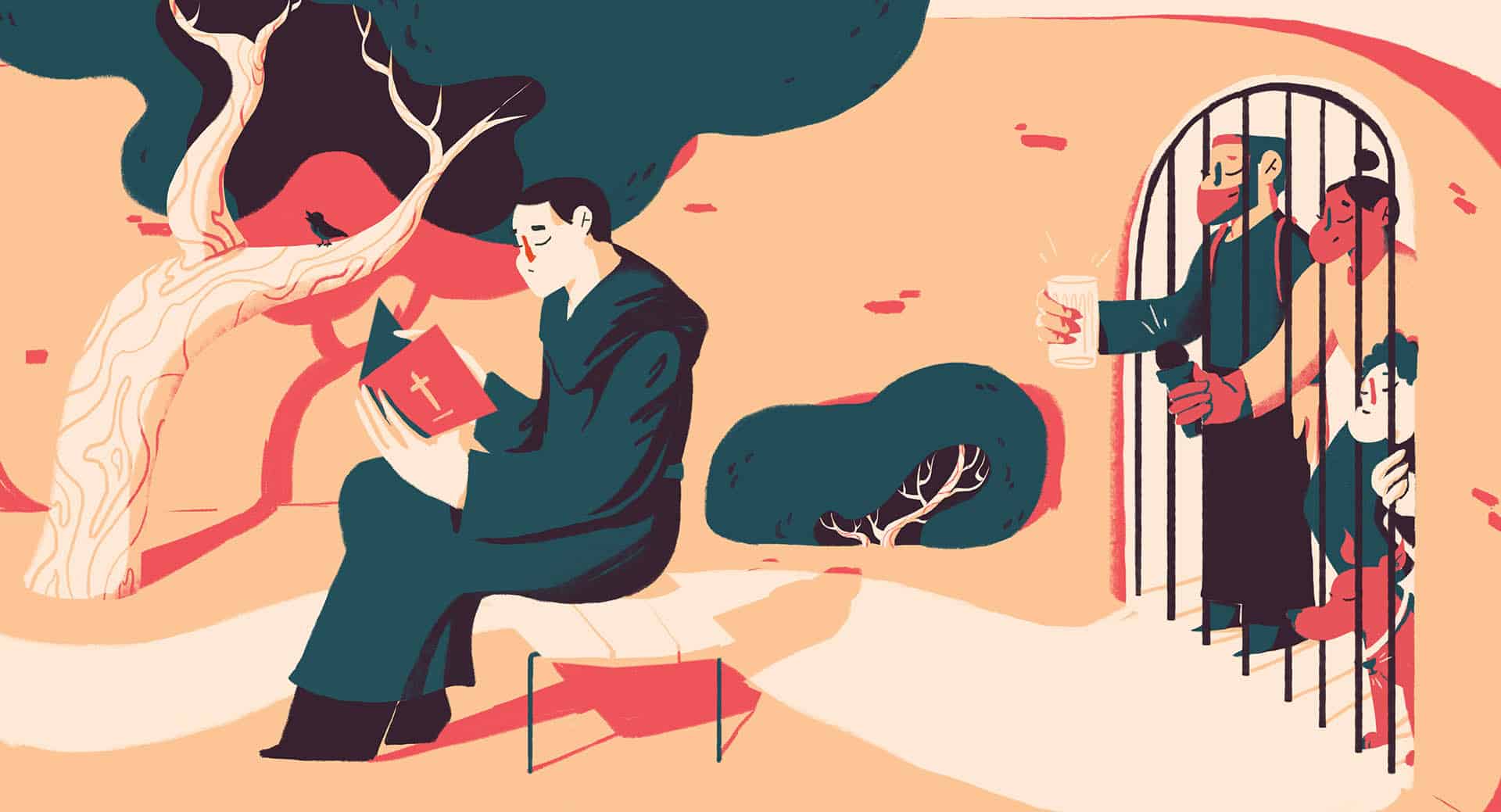
II.
The Outside World
There’s a mirrored brick, almost invisible, set into the border wall of St Sixtus. Looking at it from the outside you see nothing of the abbey’s inside, only yourself staring back. It’s likely a two-way mirror, used by St Sixtus monks to look out on the street without the village looking back in at them; to see the world they rarely venture into; to ponder at a chaos that unfolded outside the monastery in the late summer of 2005.
Contact with the wider world is not forbidden by the Cistercian Order of the Strict Observance (also known as “Trappists”), but it is limited. Looking through that mirrored brick today, they’ll likely see a slow drip of customers, headed to pick up pre-booked cases of beer in their cars, or to the café that serves their three beers in bottle—the Blond (5.8% ABV), the Dubbel (8% ABV) and the Quadruple (10.2% ABV).
Things are much quieter now than they were 20 years ago, but the odd queue still forms at the beer drive-through and the café buzzes all day. For most of the clientele, this is a local lunch spot; a quiet religious pilgrimage rather than a beer one. After a bottle of blond and a croque monsieur, some take a stroll up the leafy avenue alongside the monastery that leads to the Lourdesgrot.
Here, under a rustling green canopy, lay people have the chance to worship close to the monastery. Dozens of figurines of the Blessed Virgin Mary stare silently at the floor, ignoring the candles that flicker for as long as a €1 candle can muster. To the left as you approach are three benches, taken by the St Sixtus monks when a service is in session. It’s the only place where the high wall or hedges break and give you a look into the grounds. All you can see is bushes and trees.
That’s pretty much all there was when the monastery had its beginnings. In 1610, some hermits moved into an abandoned church and asked the local abbot for permission to form a monastic community. That monastery was closed by order of Holy Roman Emperor Joseph II in 1784, on the grounds that all “contemplative” monasteries—those that neither taught or treated the local community—were “of no use to man and therefore not pleasing to God”.
Thirty years later, however, an old man named Joannes Baptista Victoor moved into the forest to spend his final years praying and working. He had loose ambitions to found a new monastery as his legacy, and while he never lived to realise his dream, he survived just long enough to greet the monks who would. They arrived on the 1st August 1831 from the French Trappist monastery of Mont-des-Cats, fleeing after their Prior had a disagreement with a local bishop. Somehow those monks ended up in Victoor’s forest, and sought refuge in his hermitage. The local abbey considered this the re-establishment of a monastery, and gave them leave to start a community.
III.
Distraction
Work began on the church and other buildings, but the founders were beset by financial issues. Prior Franciscus-Maria van Langendonck appealed to the Belgian authorities, who put him in touch with the only other Flemish Trappist monastery at the time.
Funded by a grant from Westmalle Abbey, donations from wealthy locals, and whatever could be earned through the sale of timber, butter, and eggs from its fledgling farm, construction began in earnest. As was tradition, the monks provided all laymen working on the site with food and drink, including beer—so much beer, in fact, that in 1838 the monastery spent 919 Francs on an old brewery to make their own. In 1870 a second brewery was installed, and in 1877 the monks started selling beer to the local community.
For more than 80 years the monastery flourished. With a growing brewery, farm, dairy, carpentry and book bindery, St Sixtus was a hive of activity, home to around 50 monks at a time. When World War I broke out it was used as a base for refugees, soldiers, and supplies but kept its core activities, even expanding the brewery shortly after Armistice Day.
The following two decades were perhaps the busiest for the brewery until modern times: it was expanded in 1922; an artesian well was dug in 1926; and a steam engine installed in 1927. In 1931 the monks set up a bottling line to sell their beers in small-pack for the first time, selling them throughout Belgium. Those beers were named 4º, 6º, and 8º respectively for their Belgian brewing “degrees”, an obsolete calculation of the gravity of beer stipulated by Belgian law for the payment of taxes. And then, in 1939, a century after its first brew, the monastery released a 12º beer—an ancestor of the beer that would go viral in the next millennium.
The Abbey was again spared by World War II, but the brewery suffered from internal turmoil. The brewing business had grown so large that Abbot Gerardus, elected in 1941, was concerned it had become a distraction. In a written submission to the General Chapter of the Order of Cistercians in October 1945 he declared that “The operation of the brewery create[s] too much contact with the world and its pernicious influence on religious life.”
The St Sixtus council decided the brewery should shrink to brew beer purely for the monks, the café, and benefactors. The move was meant to give the monks more time to focus on study and manual labour, and the peace to practise continual prayer. For sixty years it worked, but without realising it the council had set itself on a collision course with the outside world.
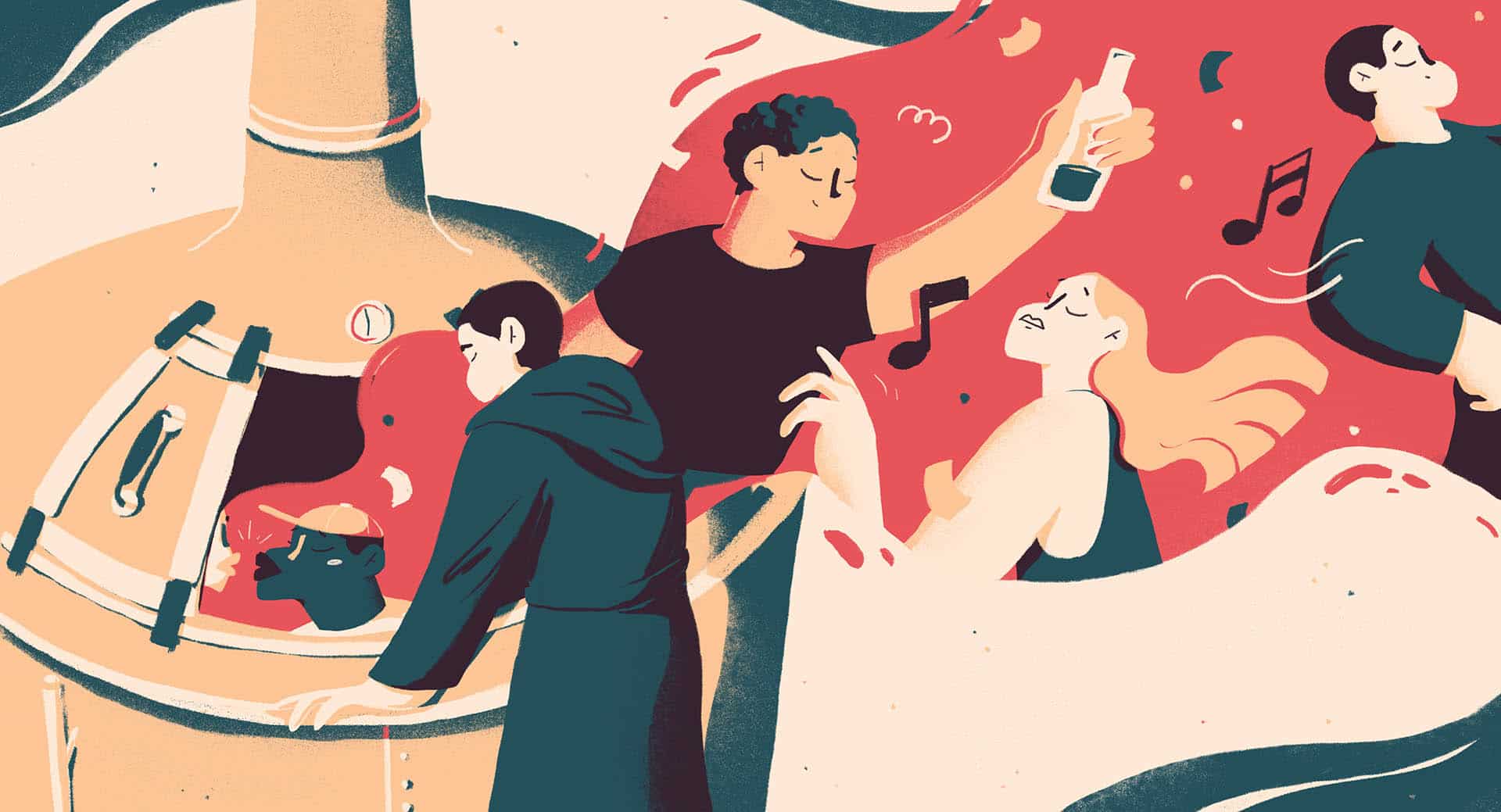
IV.
The Gamble
It started with a card game: “The owner of a cheese factory and the Abbot were friends,” says Brouwerij St Bernardus sales director Marco Passarella of the link between St Sixtus and St Bernardus. “They played cards together.”
That cheese factory owner, Evariste Deconinck had bought his cheese-making business, St Bernardus, from another Belgian monastery but had no link to the brewing world. It may well have been over a game of cards, but wherever it happened, Abbot Gerardus offered Deconinck a licence to brew St Sixtus’s beers. St Bernardus would go on to make Westvleteren beers for the next 46 years until 1992.
The move was not uncontroversial. It risked confusing customers, and put the monks’ reputation for high-quality, honest work in the hands of lay people. According to Jef van den Steen in his book Trappist, Father Edmundus Verschelden of Westmalle advised strongly against the licensing arrangement, saying the contract would leave their “hands tied”, and “on no account” should it be signed.
But Abbot Gerardus clearly trusted his friend, or knew that the Abbey’s small brewery would not be enough to support it financially. Deconink bought a brew kit for St Bernardus and made the monastery’s layman brewmaster Mathieu Szafranski a partner in his new business. It’s been widely assumed, because of this (and perhaps because of St Bernardus’ alluring marketing), that the beers Deconink and Szafranski made at St Bernardus were almost identical to those previously made at the St Sixtus brewery, with the same processes and ingredients, including the yeast St Sixtus used to ferment the beer. But the reality of the situation may be more complicated.
Sources close to Westvleteren claim that the rationing of grain during World War II meant that the breweries of West Flanders were not able to brew regularly enough to keep their house yeasts healthy and that, Trappist and secular breweries shared their strains throughout the war, making the task of tracing the lineage of St Sixtus’s yeast back to the 1930s a virtually impossible one. In his “Trappist blog”, Belgian beer journalist Wim Swinnen writes that “pure Saint Sixtus yeast has almost certainly never existed.” It’s also worth noting that some Belgian media sources suggest that the original beers of St Sixtus may have more resembled what we might describe today as an Oud Bruin rather than the modern Quadrupels produced today by Westvleteren or St Bernardus.
However close the St Bernardus beers may have been to the Westvleteren beers of 1946, the deal was so profitable that Deconink sold off the cheese-making arm of his business in 1959 to focus solely on brewing. To their surprise the monks also prospered, and not just through their small share of St Bernardus’s success.
Sources at Westvleteren claim the monastery brewery regularly ran out of beer despite batches being prone to infections that forced them to accept returns from customers. Despite this, the monks expanded their brewery in 1964, 1965, and 1976, the last expansion delivering a laboratory at the insistence of Brother Thomas from Westmalle who had been brought in to solve the quality issues. Brother Thomas didn’t just start analysing the old beer though: he made several changes to the brewery’s recipes and processes, introducing the Westmalle yeast and removing most of the old brewing equipment, including a coolship. In effect, he cleaned up the beers and transformed them into the Westvleteren line-up we know today. Finally, in 1987, an external engineering firm helped modernise the brewery. The investment was either well planned or well timed, because within five years, the brewing of all Westvleteren beer had to be brought back in house.
The reputation that the Trappist breweries had earned in the early 20th century—most notably Westmalle—encouraged some lay breweries to trade off the movement’s name. In response, Westmalle trademarked the name “Trappist Beer” in 1933, and a year later Orval trademarked its iconic fish logo. Even so, Belgian family brewers persisted in calling their beers “Trappist”—including household names like Het Anker (who made Cardinal Trappist) and Van Eeke (brewers of Trappist ‘t Kapittel).
In 1960 the monks at Orval consulted a lawyer regarding Van Veltem brewery, which had just released a beer labelled Trappist Van Veltem. Ghent’s commercial court ordered Van Veltem to cease selling its beer, and to pay Orval one Belgian Franc in nominal damages. In 1979 a legal ruling about the naming of Trappist cheese went further, saying that Trappist cheese was defined not by its flavour but by its origin, inside the walls of a monastery. The precedent had been set.
All that time, Westvleteren seems to have kept quiet. Their “Trappist” beer was produced at a lay brewery some 10km away. That contract came to an end in 1992, and the monks assumed responsibility for all the beers again to meet the Trappist definition that was finalised in 1997.
From the beginning, Westvleteren intended to stay small and—unlike most Trappist breweries—retained an element of manual labour in the brewhouse by having its monks physically brew the beer. At the consecration of the new brewery, the Abbot laid out the law: “We are not brewers. We are monks; and precisely because we want to live as monks, we brew.” This was celebrated by locals, but for St Bernardus it nearly meant ruin.
“The monks became a little bit our competitors and it was very difficult to grow,” says Passarella. “Until 1998 it was dark and gloomy here because they were looking for someone to take over the brewery, and didn’t invest anymore.”
Fortunately St Bernardus was rescued in 1998, when local businessman Hans Depypere bought the brewery. He invested heavily in the brewhouse and the branding, turning the ship around and maintaining a healthy relationship with St Sixtus so they could continue to brew the beers according to their contracted recipes. Today, Westvleteren uses Westmalle yeast, while St Bernardus continues to use an evolution of the strain given to them by Polish brewmaster Szafranski.
The two beers are difficult to tell apart unless they’re side by side. Abt 12 is dark, rich and brooding, with cocoa and fruity coffee cutting through sticky toffee and dates, while the monks’ beer is lighter—with caramel, figs, red berries, and liquorice, gaining more herbal notes and dried orange peel as it ages.
Both are complex, intriguing, and hugely respected beers, but in 2005, only one was rated the best. Only one went viral. Only one sparked an incident that required government intervention. So how did this small-batch, relatively unknown beer, go from obscurity to being crowned the best in the world?
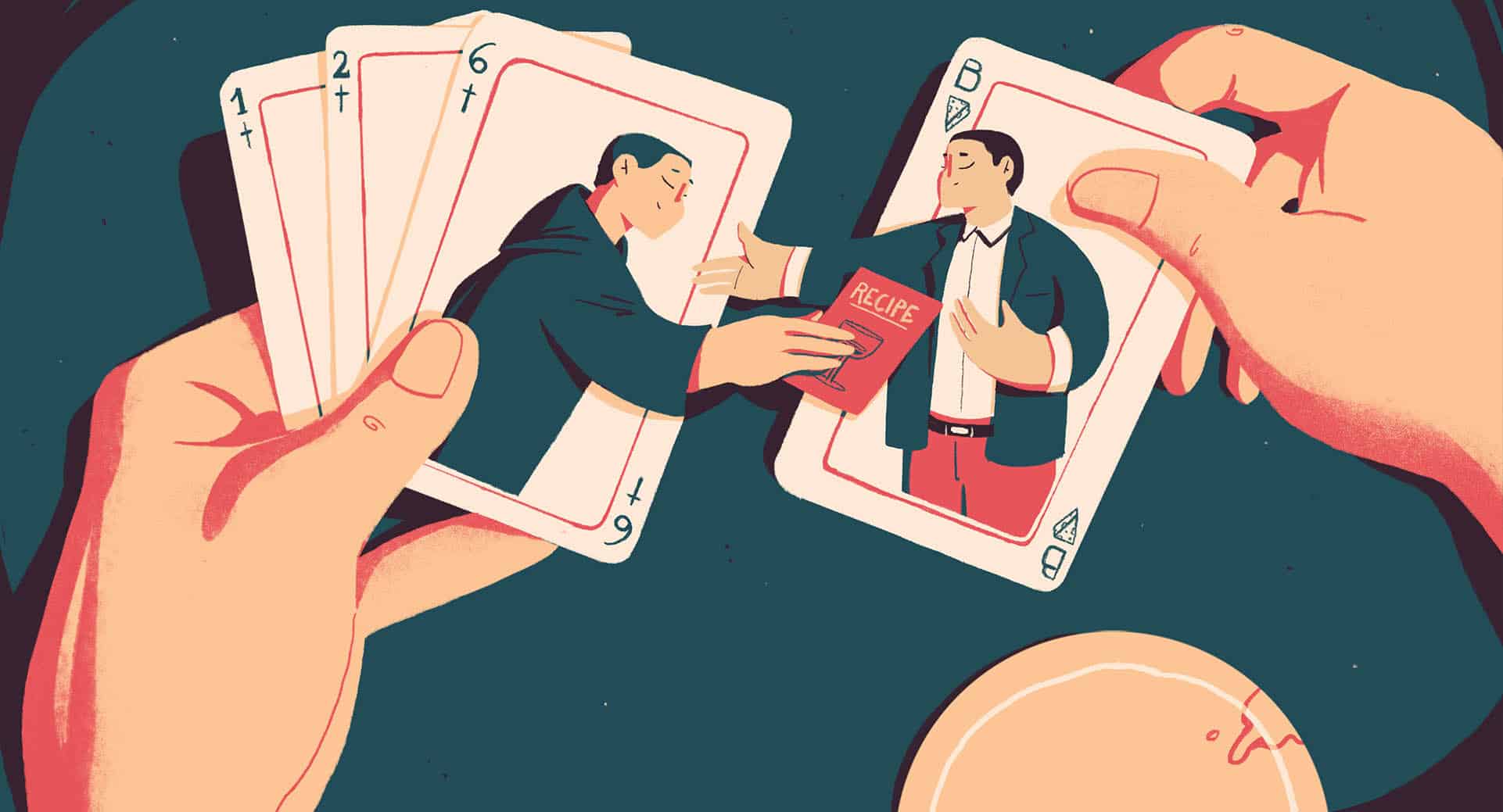
V.
Slow News Day
Bart Verhaeghe: “It was August, there was nothing much in the news, so a journalist at the national broadcast corporation (VRT) picked up on the story, and the whole shit started.”
Bart Verhaege now works for UK beer importer Cave Direct, but in the early 2000s he ran his own import business, personally bringing in specialist Belgian beer for the few cafés and bars that stocked such things back then. He used Westvleteren as a deal sweetener for bar owners who really knew their beer.
At the time, Westvleteren beer releases were announced on a blackboard outside the brewery, and customers could buy up to five crates of beer—with no questions asked.
“I had a Volvo Estate, great for muling beer,” says Verhaeghe, “but the wooden crates were a nightmare because they wouldn’t stack.”
Verhaege lived in England, so his father-in-law picked up the beer and he collected it from them as he went through Belgium buying the rest of his stock. For those people who loved beer, Westvleteren was the holy grail. Verhaege remembers an early morning trip to pick up crates in December 2004, when he came across a snow covered pyramid just outside the gates. It turned out to be a tent.
“Out came this guy, an American exchange student,” he says, “his glasses completely condensed. He came from Poperinge station, so he’d walked 10 miles.”
Unfortunately for the student, only the Westvleteren Blond (8º) was for sale that day, so the student proceeded to fill his bag, then head to the café to drink the other beers. Verhaeghe and his uncle joined him for lunch and a beer while they plucked up the courage for the icy drive home, then gave him a lift back to the station. “He knew more about Westvleteren than the average local,” says Verhaege.
In 2004, Westvleteren beer was regularly available, as long as you were free on the right day or willing to camp out. That all changed after the RateBeer story broke.
“There was just a stampede on the abbey,” says Yves Panneels, who handles the monastery’s PR today. “All of a sudden there were traffic jams around the countryside of Westvleteren, something they had never seen. Police had to intervene.”
With the beer only (officially) available from the gates of the brewery, thousands of people—beer lovers and the general public alike—descended upon the abbey in the hope of securing some. Gerardus’s decision in 1945 to only serve those who came to the gates was an attempt to keep the world at arms length, but in the end he brought it closer than ever.
The news cycle was given another lift when the then-President of Flanders, Yves Leterme, claimed he enjoyed a bottle of Westvleteren 12 every night before bed. The perfect storm of press kept people coming, whether there was beer available on the day or not. The traffic jams snaked for miles around the monastery. The national broadcast corporation VRT sent helicopters to film the gridlock from above.
“They are all little farmer’s roads around,” says Verhaege. “Only one car can pass at a time and you really have to manoeuvre. The gate is at a kind of T-junction, so they were coming from all directions.”
In a bid to end the madness, the monks installed what became known by the public as the “beer phone” and insisted that anyone looking to buy beer called ahead to reserve beer. On the day of the first release they received over 100,000 calls. They had less than 300 cases available. The deluge of calls brought the local telephone system down, so the government had to step in and arrange a national hotline number. Even then, answering them all was impossible and many people were left frustrated—most of all those who relied on stock for their business.
“My father-in-law tried to call hundreds of times but never got through,” he shrugs.
With demand outstripping supply to such an extreme, the value of the beer on the grey market skyrocketed and professionals started buying and selling the beer in volume through well organised schemes. Verhaeghe’s father-in-law witnessed it first hand while waiting for his wife at a nearby shopping arcade.
“He parked his car and two places along was a white van,” says Verhaeghe. “A car pulled up behind, the doors opened, five crates of Westvleteren were exchanged. Five minutes later another came in. One after another.”
While the monastery was selling the beers for roughly €1.50 a bottle, it was reaching the consumer in places like the Netherlands for as much as €20 per bottle. Even as the hotline cooled down, the hype around the Westvleteren 12 in beer circles persisted. It held on to top spot on RateBeer until 2008, when Three Floyds’ Dark Lord overtook it—a beer often considered the first to create hysteria and queues at a brewery. Really though, Westvleteren was the first “hype” release in beer’s history, and certainly the first time that hype reached the mainstream media.
Many modern breweries, now household names, have admitted to playing the RateBeer game of brewing styles and designing recipes specifically to score well on the website—inspired by the remarkable story of Westvleteren. The RateBeer score of Beer Geek Brunch single handedly made Mikkeller a commercial reality, and the rating website enabled Omnipollo to become a multinational brand.
“We were obsessively focused on RateBeer and it defined what we made,” said Omnipollo cofounder Henok Fentie back in 2022. “Export back then was completely driven by whether you were a top-10 brewer. You couldn’t brew a Lager or a Mild because it would damage your rating.”
Many hype releases have come and gone in the 15 years since Westvleteren 12 last topped RateBeer, but it’s still always mentioned in any conversation about the best beer in the world. As the dust settled around the Abbey, only one question remained: was it worthy?
VI.
The Test
At the 2017 edition of Tallinn Craft Beer Week, Estonian brewery Lehe Pruulikoda pulled an infamous prank they described as “an experiment”. They bought 100 bottles of Westvleteren 12 and decanted them into a keg, which they then served under their own brand as “Monky Business” at the festival.
The owner of the brewery at the time, Tarmo Tali, was disappointed with his beers’ RateBeer scores and wanted to test how much unconscious bias was a factor when rating beer.
“None of us knew about it,” says Lehe Pruulikoda’s head brewer Mati Sild, who was pouring the beer on the day. “I brewed a pilot version [of a quad] and [Tali] was like ‘it’s not a bad quad’, but that weekend replaced the keg with the Westvleteren. It was only after we’d served it that he told us.”
Sild says he thought something was going on with the beer, however. He loved Westvleteren 12 and had sought to replicate it with his brew, using the same maltster as the monastery and looking at clone recipes online. He’d tasted it before carbonation and been pleased with the results, but at the festival he was surprised by how familiar the beer tasted for a first attempt. As a result, he was excited to serve it to people, who were as unaware as he was of what the beer was.
But the beer received a muted response. You can still see its score on Untappd today, based on people moving their reviews over from RateBeer. Although some festival goers were suspicious of the beer’s true identity, most gave it a middling rating and moved on. In a blog about the experiment, Tali remembers that some people described it as “boring” and a “failed attempt”.
Even if the beer was affected by the transfer from bottle to keg—and Sild says Tali tried to account for it by adding carbonation afterwards—there’s clearly more at play given the Untappd scores. Westvleteren 12 has an average rating of 4.49 out of 5 on the app, while Monky Business languishes at 3.45.
It would be easy to say that Westvleteren gets its high score from its scarcity. But Westvleteren 12 isn’t even the rarest Westvleteren beer, let alone the rarest Trappist ale, the rarest Quadrupel, or the rarest Belgian beer. The reasoning behind Westvleteren’s incredible score goes beyond how hard it is to get.
For one, it seems to have been the first dark, really strong Trappist beer.
Rochefort 10 and Chimay Blue came in the 1950s, while La Trappe’s Quadrupel arrived in the 1990s. But the original Westvleteren 12 was only made for six years before its production moved to St Bernardus—so why isn’t Abt 12 treated as the benchmark?
The answer perhaps lies in the way Westvleteren 12’s reputation was inflated in 2005— unconsciously encouraging more favourable ratings. In psychology this is known as the “anchoring effect”, where an original value (“the best beer in the world”; 4.49 in Untappd) unfairly affects our perception. Even when a person dislikes a beer, they are likely to give it a rating in keeping with others’ opinion of it.
This effect can be applied the other way around, as was the case of the Monky Business incident: When a beer is crowned the best in the world, every Quadrupel that people taste afterwards will draw the question “is it as good as Westvleteren?”. Even if the answer is yes, this cognitive process cements the beer’s place as the benchmark—other scores must be the same or lower.
“It is the definition of a Quad,” says Sild. “If you make one, it is defined by that beer. When people brew them, they are critiqued based on how close they get [to Westvleteren 12].”
So if Westvleteren 12 is the one Quadrupel against which all others are judged, and indeed rated, how exactly is it made?
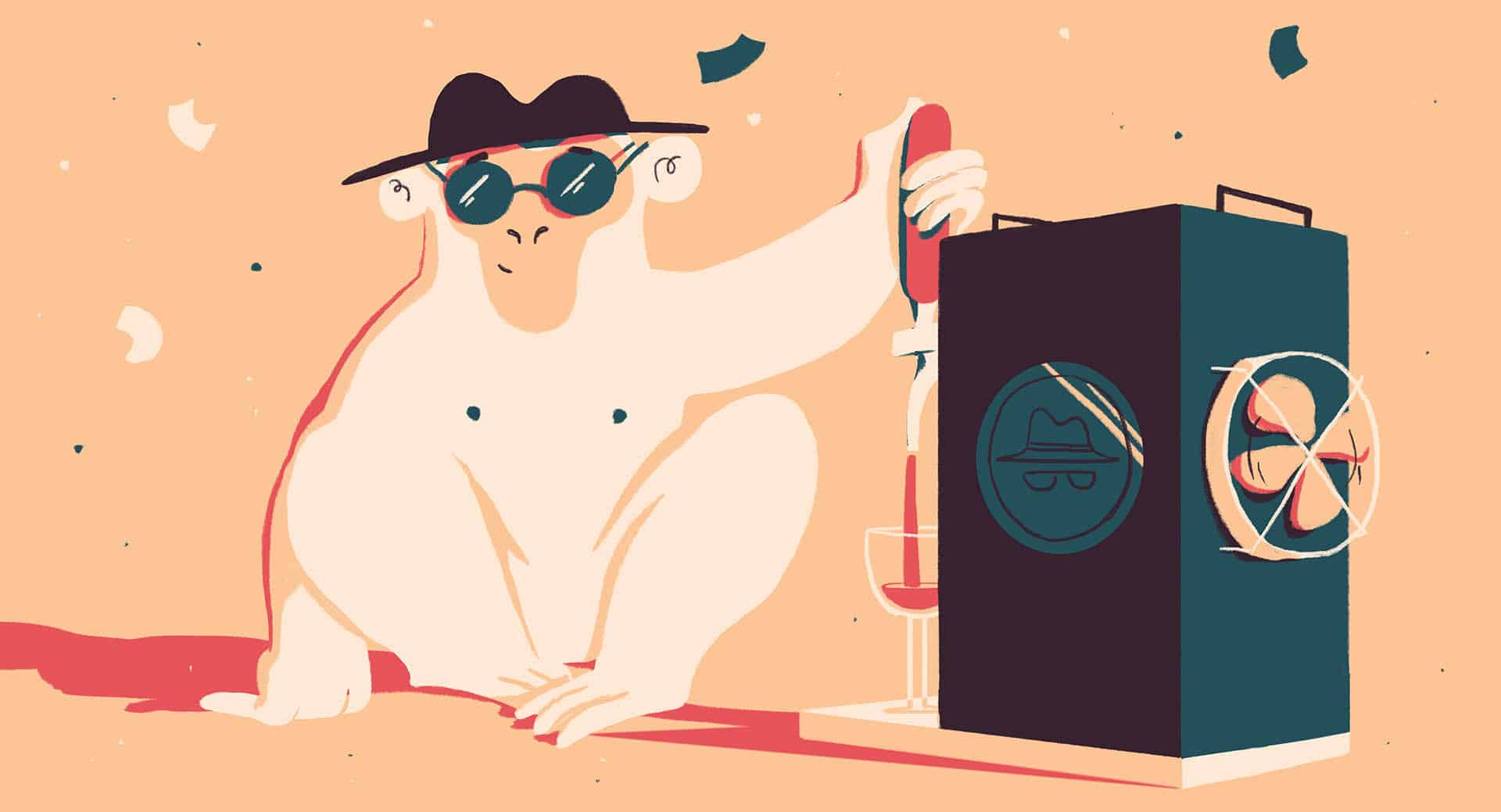
VI.
“It’s Not A Magic Potion”
Joris Pattyn paid a visit: “Trappism has something magical in the eyes of consumers,” says Joris Pattyn. “But it’s just beer. It’s not a magic potion.”
Pattyn is an author, beer blogger, and prolific RateBeer user from Antwerp, Belgium. He is also one of just a handful of lay people to have been given a tour of the brewery at St Sixtus.
Pattyn is a long-time friend of Jan Adriaensen, former head brewer at Westmalle, which supplies Westvleteren with fresh yeast and helps with the technical and engineering side when called upon. Back in 2007, Adriaensen had reason to visit St Sixtus, and Pattyn asked if he could come along. The monk in charge of the brewery replied that if Pattyn wanted to come, he needed to write a letter explaining why.
This was back in 2007, when the brewery was still getting used to its new status. The beer phone was routed to the national grid, and while it needed constant manning, it was no longer ringing off the hook. The monks were wary of creating any kind of press around the beers again—so Pattyn told them that he understood why they didn’t want to increase their production and stated that a visit to the brewery would help him explain this to others. “That was all he needed to hear,” says Pattyn.
And so Pattyn, his wife, and Adriaensen arrived at the brewery and waited for the gate to open. Once inside, Pattyn was struck by how small and hands-on the brewery was. In 2000, the brewery hit its capacity of around 4,750 hectolitres, a limit imposed purely by the monk’s refusal to add tanks and their insistence that the dark beers required up to two months of cold conditioning.
This stubbornness around process would be hard to justify at most commercial breweries, or even some of the larger Trappist Abbeys, but aside from tweaks forced by the seasonal variation in malt and hops, the Westvleteren 12 recipe has been the same since 1992.
It still uses hops from the local Poperinge region, Dingemans malts from Stabroek in the province of Antwerp, and invert sugar to bump up the ABV without adding body, as is the case with extra grain. Each batch uses fresh yeast delivered from Westmalle, which ferments in open-top, rectangular tanks. There is no filtration or centrifuge; instead the beers are cold conditioned until they are bottled, at which point more sugar is added to ensure the refermentation in bottle that fuels the carbonation.
Clearly it is no magic potion. But great beers such as Westvleteren seem to transcend the hard science that goes into making them, and come close to art. Perhaps that explains Pattyn’s vague sense of deflation on seeing the brewery.
“A brewery is a brewery, even if it’s operated by monks,” says Pattyn. “But the people who were making the beer really loved what they were doing. They loved the quality, even if they would never drink the 12 themselves.”
Panneels says the monks of St Sixtus do not drink the Westvleteren 8 or 12, sticking to the Westvleteren Blond. But Westvleteren is one of the few monasteries that had monks brewing the beer right up to a few years ago, and still there are three involved—one on the brewing side, another in packaging, and a final one looking after the books. By contrast, most Trappist monastery breweries only have monks involved on the board of the business.
It may seem contradictory that the monastery most keen to avoid outside influence is the one that demands you come to the gate to buy the beer and insists on being directly responsible for its production. But it does allow the monks to control their beer as much as possible. Today you have to prebook online, and can buy a maximum of two cases of beer at a time. The online system is effective at weeding out those looking to sell the beer onwards by tracking who is buying and when they last ordered.
“More than 1,000 accounts have been blocked because there were irregularities,” says Yves Panneels. “Their main objective [is] that more people can try Westvleteren and at an affordable price—a price the monks decide.”
Occasionally, however, they have had to reach out to the world. In 2012, major works needed on their buildings forced them to find other, more profitable markets, so the beer was sold in gift packs in the US, including a large release on the 12th December. In 2023 the Abbey announced it would ship around 240,000 bottles (about 10% of its annual production) to the Netherlands each year in a bid to undercut the only significant grey market route remaining.
Of course, it’s not the only grey market route. At this very moment there are likely hundreds of bottles of Westvleteren in the air or on ships in small, lovingly packed boxes, on their way to excited beer enthusiasts all over the world in exchange for something rare and treasured from their corner of the globe. At the end of the day it doesn’t really matter if Westvleteren 12 is the best beer in the world or not. All that matters is what you believe.
*


